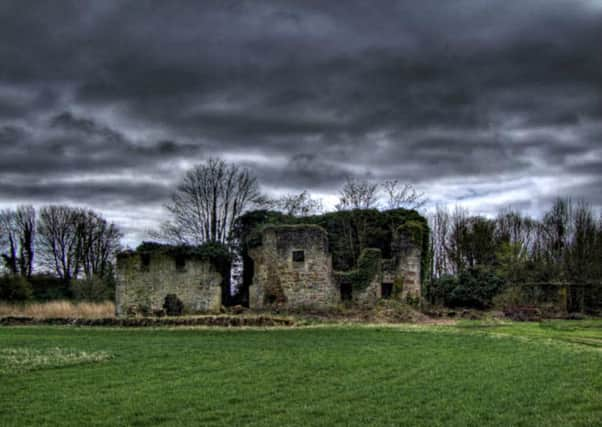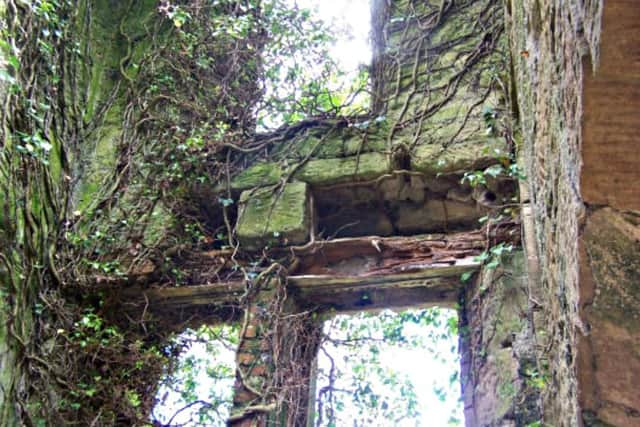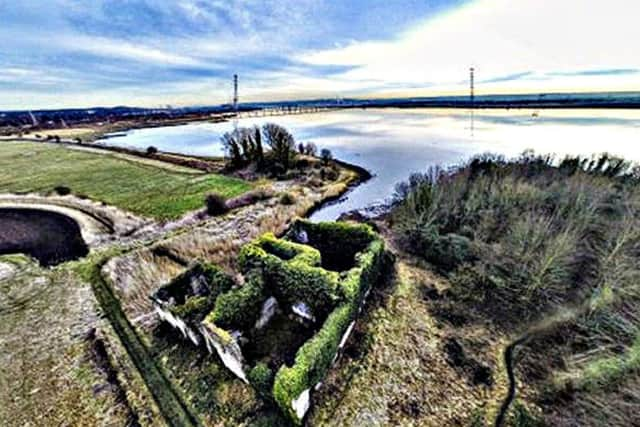Rescue of 'birthplace' of Scotch whisky industry to begin


Kennetpans near Alloa, Clackmannanshire, became Scotland’s largest distillery in Scotland in the 1730s and is credited with bringing the distillation of whisky from the farmyard to an industrial scale.
It was a huge exporter of spirit to the London Gin markets and the biggest grain whisky distillery of its time.


Advertisement
Hide AdAdvertisement
Hide AdNeil Wilson, whisky historian, has described Kennetpans as part of the DNA of the modern worldwide whisky industry.
But what remains of the building - which housed Scotland’s first James Watt rotative steam engine - has come close to complete ruination.
Historic Enviornment Scotland is due on site next month to continue stabilising the property - a scheduled monument of national importance - with some removal of vegetation already underway.


It is hoped to make Kennetpans, formerly owned by the Stein family dynasty, more accessible to the public and to illuminate this part of Scotland’s whisky heritage.
Advertisement
Hide AdAdvertisement
Hide AdBryan Frew, of Alloa, acquired the distillery around 10 years after buying a piece of land with his wife Fiona.
He said: “The building is pulling itself apart in about three of four different directions.”
Mr Frew, who urged people to stay away from the site for now give recent damage caused by visitors, added: “This building is so important not just to the history of distilling in Scotland but also to the story of the industrialisation of Scotland.”


Letters found by a researcher working on the conservation projet detail negotiations between the Stein family and inventor James Watt who oversaw the installation of Scotland’s first Boulton and Watt rotative steam engine to power the millstones and water pump at Kennetpans.
Advertisement
Hide AdAdvertisement
Hide AdOne of the earliest canals in Scotland connected Kennetpans to the neighbouring operation at Kilbagie, also operated by the Steins, which in turn was connected with the harbour at Kennetpans from where the spirit was exported.
Production rose to such levels at the turn of the 19th Century that the duty paid by the two distilleries was greater than all land tax collected annually in Scotland, Mr Frew said.
The distillery also has direct links to the hugely popular Haig and Jameson brands.


Mr Frew said progress on the preservation of Kennetpans had been “frustrating” at times given the significance of the building to the story of Scottish whisky.
Advertisement
Hide AdAdvertisement
Hide AdHe said: “I suppose when you think of whisky you think of somewhere up north but that is really the malt industry. That is only about 10 per cent of total production.
“The grain whisky is really forgotten. But there really wouldn’t be such as thing as the Scottish whisky industry if it wasn’t for grain whisky.”
The Stein family, who also ran distilleries in London and Ireland, were severely hammered in 1786 by increased duties on export of spirit from Scotland to England.
James Stein was taken to court amid allegations that he bribed the Solicitor of Excise in Scotland to ignore the new tax regime.
Advertisement
Hide AdAdvertisement
Hide AdHe was admonished and subsequently counter-sued for damages. However, the business was punished by further restrictions on exports south of the border with the family facing bankruptcy amid debts worth tens of millions of pounds.
Despite the difficulties, the distillery remained in production until 1825.
Victor Brierly, co-founder of the Whisky Ambassador, a whisky training programme for the licensed trade, said the lack of attention given to Kennetpans had been a “disgrace.”
“Kennetpans, the birthplace of the Scottish Whisky Industry, the very Genesis of all things Scotch, lies unloved and in ruins.
Advertisement
Hide AdAdvertisement
Hide Ad“We created modern distilling, gave it to the World and this is how much Scotland cares about this unique and frankly incredible historical legacy. We don’t. Not one bit. Its a disgrace.”
Historic Environment Scotland (HES) said that Kennetpans, although ruinous, was the “most complete survivor” of these once economically important east coast distilleries and was “unquestionably” a monument of national importance.
The preservation work has been possible due to funding from HES, Heritage Lottery Fund and the support of the Inner Forth Landscape Initiative.